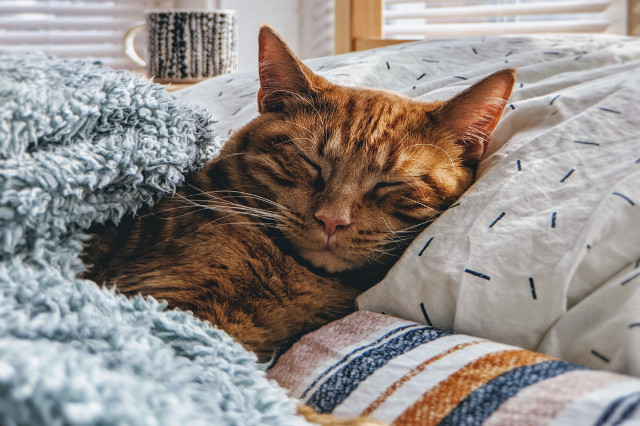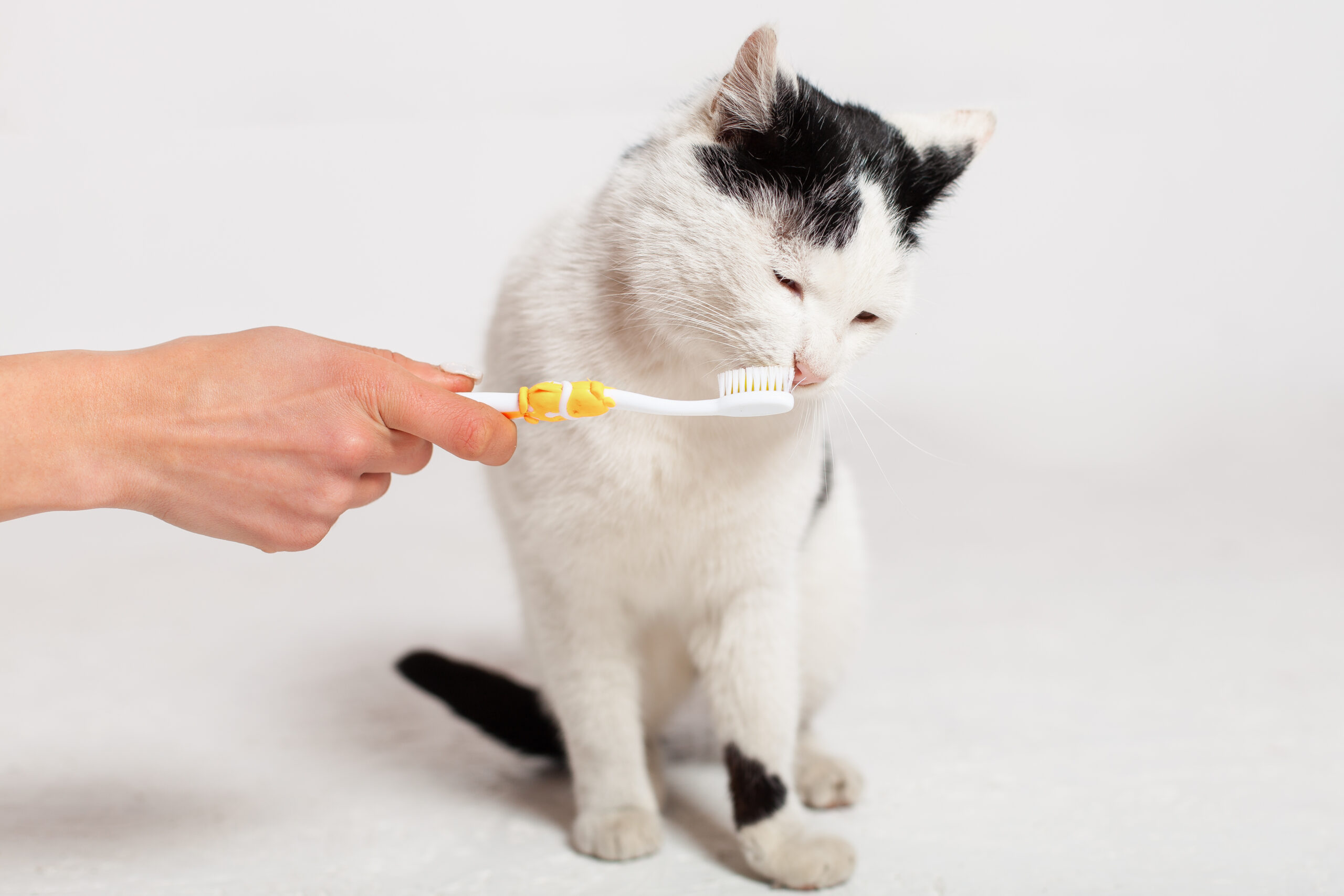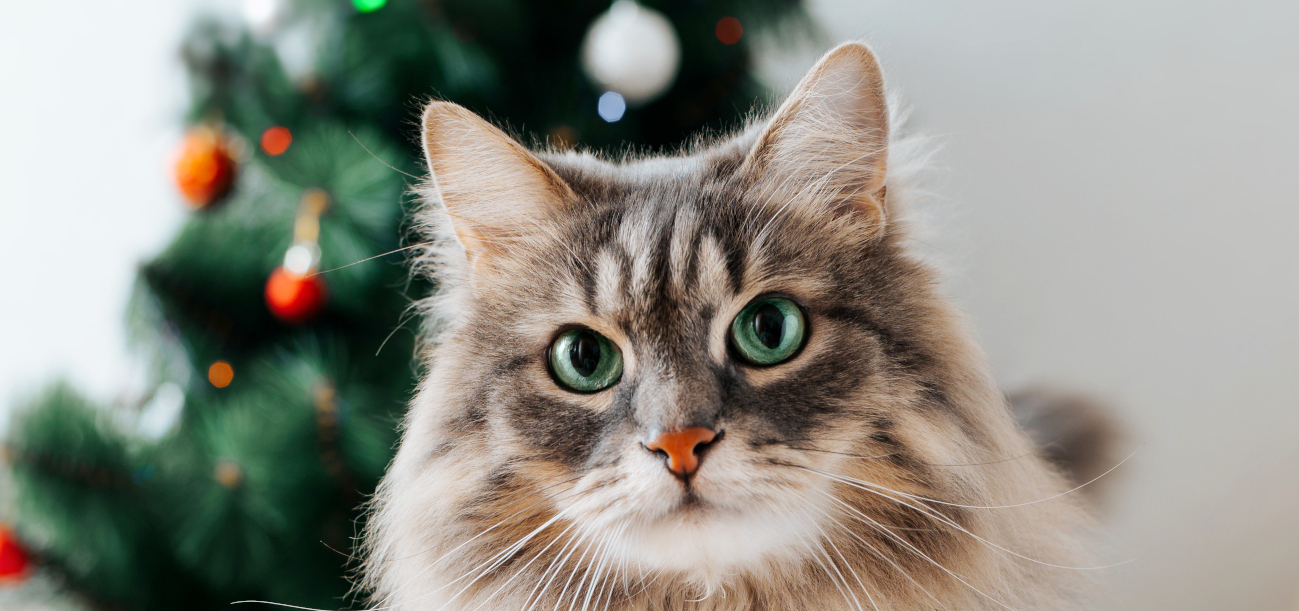With the weather getting colder each day, people are pulling their warmest sweaters, fuzzy slippers, and cozy pyjamas out of their closets. It can be tough staying comfortable in the winter, but did you know it can be just as hard for your cat?
It’s easy to not think about this at all. After all, your cat is (most likely) covered in fur from head to toe. You might think they’d have no problem staying warm; however, cats can get cold just as easily. If you let your cat go outside, it’s possible that they’ll catch a chill, or spend a little too long out in the cold rain or snow. Even indoor cats can get cold, especially if they wind up spending time in a chillier part of the house, such as basements, attics, or anywhere else with poor insulation or generally low temperatures.
Your cat’s comfort and happiness is obviously one of your top priorities as a pet owner, and you shouldn’t underestimate how much of an effect cold weather can have on your furry friends. Read on for some seasonal cat care tips on keeping your cat safe and warm in winter.
Keep your cat in mind when setting the heat
You might be a little hesitant about touching the thermostat, even when it’s getting colder outside. Heat can be a major cost on your utility bills, but when it comes to your cat, it might be worth the extra few dollars a day. Since we always have the option to throw on a sweater or bundle up in a blanket, it might seem like the house isn’t as cold as it really is. But the cold can impact your cat much more. Not only are they less likely to cooperate with wearing sweaters, but also they spend most of their time low to the ground, meaning the house might feel much colder to them than it does to you.
We recommend keeping the heat up, at least a little bit, to help your cat stay warm and comfortable. Similarly, if you’re leaving the house, don’t turn the heat all the way off. Your instinct to save power could mean a cold day home alone for your cat, something no one wants. Before heading out, consider how cold it is outside and adjust the heat accordingly.
Make a cozy spot for them to relax when they need it
Cats love to have a little spot of their own to retreat to when they need to relax. Consider setting up a cozy spot for your cat in the winter months. You can use their regular bed if you have one, and add a couple of blankets or warm towels to supplement it and keep your cat as warm as possible. You should also put it in a warmer room of the house, so they’re more likely to take advantage of the cozy spot when they need to take some time to rest.
Consider special accommodations for cats with joint problems
Like humans, cats with joint problems like arthritis tend to experience more pain and discomfort in the colder months. To combat this, consider looking into a special bed designed to help cats with joint issues. These often use orthopedic foam, which will be much more comfortable and provide relief for your cat’s aching joints. Some models are even heated, which will help with their pain as well as keep them warm.
Ensure they’re getting a nutritious diet
One of the best ways to ensure your cat is warm enough in the winter is to feed them as nutritious a diet as possible. This way, they’ll have enough caloric energy to keep warm, and the nutrients in their food will help keep their coat thick and healthy. Between these two factors, it’s clear to see that a balanced, nutritious diet is a crucial part of keeping your feline friend comfortable in the winter.
If you’re not sure what the best diet is for your cat, ask your veterinarian the next time you see them.
Keep active, keep warm
Some people like to go for a little jog, or do some jumping jacks to get the blood flowing and warm up when it’s cold out. The same goes for your cat. They’ll probably be much colder if they’re not doing as much around the house, leading to decreased energy and further inactivity, which will just make them colder. Break this cycle but taking time every day to play with your cat.
Choosing an activity depends on your particular pet. Some love to chase toys or laser pointers around the house, others might have lots of fun navigating obstacle courses of boxes, cat tunnels, and the like. Experiment to figure out what gets your cat moving the most, and take as much time as possible to play with your cat.
Make sure your cat’s skin is healthy
You might suffer from dry skin in the winter, but did you know that cats can experience the same problem? The low humidity and cold temperatures can wreak havoc on your cat’s skin, particularly if it’s on the sensitive side. We recommend checking your cat’s skin regularly, but especially in winter. Signs of dry cat skin include:
- Redness
- Skin flakes in your cat’s fur
- Scaly skin under their coat
- More frequent scratching or gnawing
- Painful red sores
If you notice your cat getting dry skin based on any of the above symptoms, you should ask your veterinarian for treatment recommendations. They may prescribe a topical solution to apply to the affected areas, or in some cases, a supplemental vitamin such as Omega-3 fatty acids. Keep in mind that you should always follow your veterinarian’s advice for treatment and dosages.
Keep an eye out for fleas
Contrary to popular belief, cats can get fleas in the winter just as much, if not more, than in the warmer months. The cold winter temperatures may actually lead fleas inside, whether it be on the fur of your dog or outdoor cat, or even on your clothes. Check your cat for fleas regularly year-round, and plan a visit to your vet if you find any of the pests in their coat.
Make sure your cat is getting enough sleep
With the longer nights in wintertime, many people tend to sleep a little more. You shouldn’t be concerned if your cat seems to be sleeping more in the colder months. It’s perfectly normal for cats to get twelve, sixteen, or even twenty hours of sleep throughout the day in the winter. However, if your cat is acting lethargic even when they’re awake, or if they’re not eating or engaging with you like they normally do, you should contact your vet and have them give your cat a check-up.
Make sure they’re feeling as happy and loved as possible
It might seem far-fetched, but there’s actually evidence to suggest that cats are affected by seasonal depression, just like some of us humans. This could be because they don’t get as much time in the sunshine, or perhaps they’re simply picking up on the emotions of their humans. Remember that cats are sensitive, emotionally complex creatures, often more so than we give them credit for. Here are some ideas on how to help combat your cat’s winter blues:
- Get them a new toy
- Pick out a new brand of treats
- Give them a little catnip, or sprinkle it on an old toy to renew their interest
- Teach them a new trick
All of these ideas will aid in stimulating and engaging your cat, and help them to keep their chin up throughout the winter.
Wintertime comes with lots of joys for us humans. The holidays, the tranquil beauty of a fresh snow, and the cozy nights inside are all things many of us look forward to. However, you should always ensure your cat is having a safe, warm winter as well.
Creative Commons Attribution: Permission is granted to repost this article in its entirety with credit to Hastings Veterinary Hospital and a clickable link back to this page.






